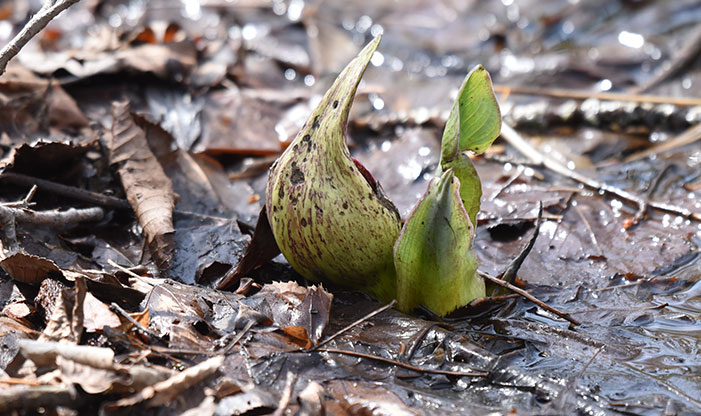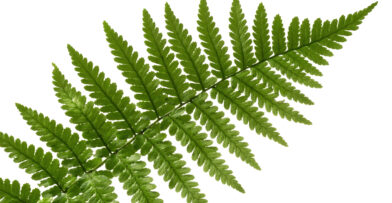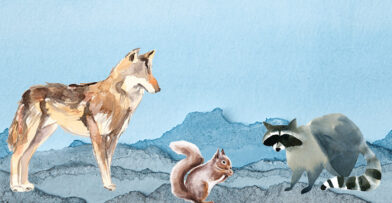As snow melts and frozen ground thaws, the rich soil prepares for spring flowers and plants. Most plants must wait for temperatures consistently above freezing. But, a few of the more resilient species are able to grow through frozen earth and snow. One of these durable flowers is skunk cabbage.
Skunk Cabbage: Signs of Spring
Skunk cabbage is one of the earliest blooming perennial wildflowers in spring. It is found in habitats with wet soil, near ephemeral ponds or in forested marshes and wetlands. Not part of the cabbage family, this member of tropical Arum family plants gets its name from the large green rosette leaves that sprout after the flower is done blooming. This typically happens in early summer. Other local Arum family plants include calla lilies and Jack-in-the-pulpit.
The name’s relationship to everyone’s favorite smelly mammal is because of a pungent odor that is released when any part of the plant gets broken or damaged. The smell resembles rotting meat or skunk spray. This odor serves a very important purpose for the plant. It attracts insects such as gnats, flies, bees, and butterflies who pollinate it. Insects also favor this spring ephemeral because of its self-producing warmth.
A Warm-Blooded Plant?
Skunk cabbage is capable of blooming so early in the season because of thermogenesis – it produces its own heat. The plant uses a process of cyanide-resistant cellular respiration to generate heat around 55 degrees Fahrenheit. This is warm enough to melt surrounding snow and ice and protect the plant from frost. This is a very energy-demanding process for the plant. Skunk cabbage utilizes as much metabolic energy as a small rodent while creating heat in below-freezing temperatures. The heat is beneficial in more ways than one for the skunk cabbage. Besides allowing it to bloom earlier than its competition, the heat spreads the odor further in the air. This attracts more pollinators who even use the plant as refuge from cold temperatures.
Not Your Typical Flower
The first part of the plant to sprout is the flower. But the flowers of skunk cabbage are unlike most native Wisconsin florals. The flower consists of a modified leaf standing 4 to 6 inches tall, called a spathe. The spathe acts like a shell around a knob-like ball, called a spadix. The spadix is covered with tiny flowers, which are protected and typically 20 degrees warmer than the surrounding air. The spathe is a deep mottled purple and green. The spadix is typically purple and yellow and always hidden within the spathe.
Once blooming is over, the spathe withers away and the spadix forms into small, easily overlooked berry-like fruits camouflaged in the dark soil. This transformation happens when temperatures are consistently above freezing and the skunk cabbage leaves can survive above soil. These green leaves sprout up to 36 inches long and 12 inches wide. They maintain the skunky smell if bruised or torn.
By late summer, the fruit will fully decay and the hard pea-size seeds will be planted or dispersed. The leaves will wither away and the skunk cabbage is reduced to its root system. This system can live up to 20 years, repeating its ephemeral life cycle annually.
Skunk cabbage will be found in a range of habitats, including ponds and wetlands. The next time you’re on a walk in one of these areas, look out for this unique and native Wisconsin plant.


